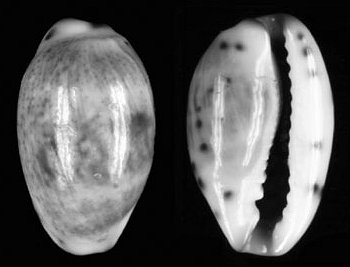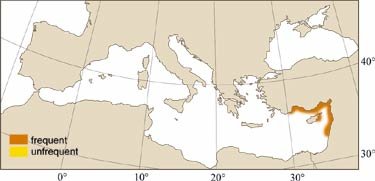
|
Relevant Synonyms
Misidentification
|
|
| photo: S. Gofas / Coll. G. Bitar |
|
SHORT
DESCRIPTION
color :
shell bluish green with tiny brown specks all over and a few large, blurry brown blotches on the dorsal side; callus around the aperture, cream with scattered dark brown spots, both ends of the aperture with paired brown/purplish blotches. The subspecies notata is distinguished by the bright red color of the mantle lobes of the animal, contrasting with the dark brownish color in P. gracilis gracilis (see Doneddu and Manunza, 1994).
common size :
15-17 mm. |
DISTINGUISHING CHARACTERISTICS
BIOLOGY / ECOLOGY
habitat :
on shallow sublittoral rocky bottoms. |
|
1st
Mediterranean record
|

|
|
DISTRIBUTION
|
ESTABLISHMENT SUCCESS
speculated reasons for success :
|
|
|
MODE OF
INTRODUCTION |
IMPORTANCE TO
HUMANS |
|
KEY
REFERENCES
|
|
|
 Palmadusta gracilis (Gaskoin, 1849)
Palmadusta gracilis (Gaskoin, 1849)